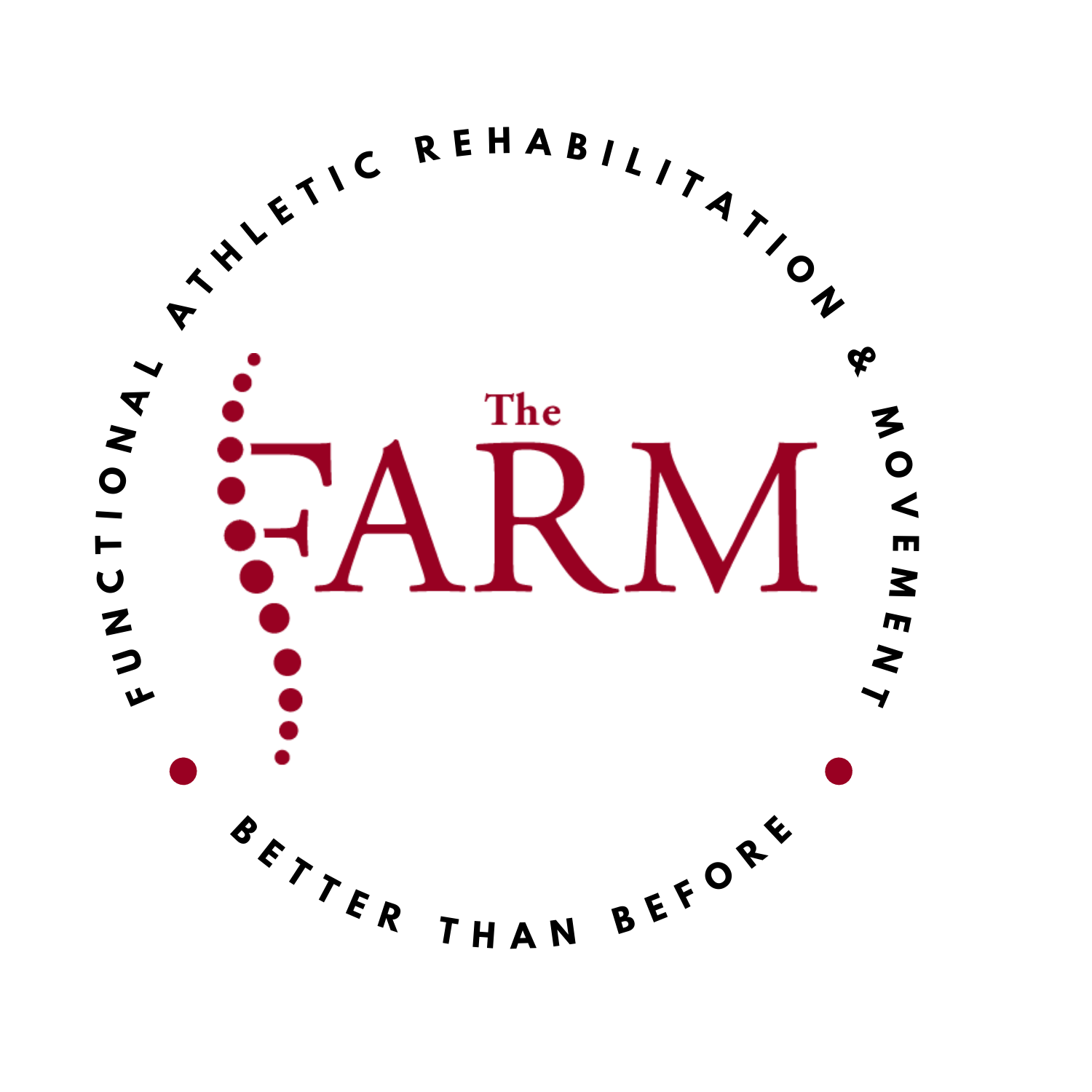Resolving Musculoskeletal Pain at The FARM: WIR 25
Understanding Cervicothoracic-Linked Low Back Pain and Medial Knee Pain in Runners
Musculoskeletal pain often shows up in places you least expect. Low back pain may not always come from the lumbar spine, and knee pain isn’t always about the joint itself. In this week’s discussion, our team explores two surprisingly common but often misunderstood scenarios: low back pain that stems from the cervicothoracic junction, and persistent medial knee pain in cross-country runners. Both conditions can frustrate patients and athletes, but with the right understanding and strategies, they don’t have to be career-ending or lifestyle-limiting.
Low Back Pain with Cervicothoracic Origins
Why the Cervicothoracic Junction Matters
The cervicothoracic region—where the cervical spine meets the thoracic spine—is a transitional area with complex biomechanics. Dysfunction here can lead to compensatory patterns that shift excessive stress toward the lumbar spine. The result? Lower back pain that doesn’t always respond to traditional lumbar-focused treatments.
Common drivers include:
Postural overload from prolonged sitting, screen time, or forward head posture.
Restricted thoracic mobility, forcing the lumbar spine to over-move.
Scapular dysfunction and altered shoulder mechanics that reverberate down the kinetic chain.
Symptoms to Watch For
Patients may describe diffuse low back aching or stiffness that worsens after sitting or standing for long periods. They may also experience concurrent upper back or neck discomfort. In some cases, breathing mechanics are altered, further contributing to pain and fatigue.
Effective Management Strategies
Restoring mobility through thoracic extension drills, DNS-based breathing strategies, and chiropractic adjustments.
Strengthening stabilizers such as the deep neck flexors, scapular retractors, and core musculature to create better load sharing.
Postural retraining with awareness drills that help patients integrate healthier mechanics into daily life.
When patients understand that their low back pain may originate elsewhere, they can approach their rehab with renewed focus and optimism.
Medial Knee Pain in Cross-Country Runners
Why Medial Knee Pain Happens
For runners, the medial knee is a high-stress area due to repetitive loading and faulty biomechanics. In cross-country athletes, pain along the inside of the knee can stem from:
Overuse injuries like pes anserine bursitis or medial plica irritation.
Biomechanical inefficiencies such as excessive pronation, hip adduction, or poor cadence.
Residual instability from previous ankle or hip issues, which forces the knee to compensate.
The Athlete’s Experience
Medial knee pain often starts as a mild ache but progresses to sharp discomfort that limits stride length and running volume. Athletes report difficulty climbing hills, turning on uneven ground, or completing long mileage. Left unchecked, the pain can derail a season or cause long-term joint changes.
Prevention and Rehabilitation
The key is to address both the local tissues and the global movement system:
Load management: Adjusting weekly mileage, surface, and footwear.
Strength work: Targeting glute medius, hamstrings, and intrinsic foot muscles to reduce stress at the knee.
Movement retraining: Gait analysis and cueing to improve cadence, reduce overstride, and promote efficient foot strike.
Manual therapy: Myofascial release and joint mobilization to restore balance in overloaded tissues.
Cross-country runners also benefit from recovery strategies such as adequate sleep, nutrition that supports collagen and tissue repair, and modalities like PEMF or contrast therapy.
Research Spotlight: Movement Retraining as Medicine
Emerging literature supports the role of gait retraining in reducing joint stress. Studies on foot strike modification for patellofemoral defects show promising results in redistributing load away from vulnerable tissues. For clinicians, this evidence reinforces the idea that pain isn’t always about “fixing” the symptomatic joint—it’s about reshaping movement patterns to create resilience.
For the runner with medial knee pain, this might mean increasing step rate to reduce impact, or working on trunk and hip control to prevent dynamic valgus. For the patient with cervicothoracic-driven low back pain, retraining posture and breathing mechanics can be equally transformative.
Clinical Pearls and Practical Takeaways
From this week’s conversation, a few clear themes emerge:
Pain often originates away from where it’s felt. Always consider regional interdependence when assessing low back or knee pain.
Athletic injuries are multifactorial. Training volume, biomechanics, and recovery practices all contribute to tissue stress.
Rehabilitation should empower, not restrict. By giving patients and athletes practical tools—movement drills, self-care strategies, mindset shifts—we set them up for long-term success.
Evidence supports retraining. Whether it’s foot strike modification or thoracic mobility work, small changes in how we move can dramatically reduce pain.
Conclusion
Both cervicothoracic-driven low back pain and medial knee pain in runners illustrate the importance of looking beyond the obvious. The FARM approach integrates clinical precision, patient education, and movement-based rehab to resolve pain and build durability.
For everyday patients, this means relief from nagging discomfort that seems resistant to conventional care. For athletes, it means the chance to keep training and competing without being sidelined by recurring injuries.
By combining hands-on care, research-informed strategies, and a holistic view of health, The FARM team continues to guide patients toward resilience, performance, and freedom of movement.
Struggling with low back or knee pain? Schedule a session with our team at The FARM to uncover the root cause and start moving toward pain-free performance.

